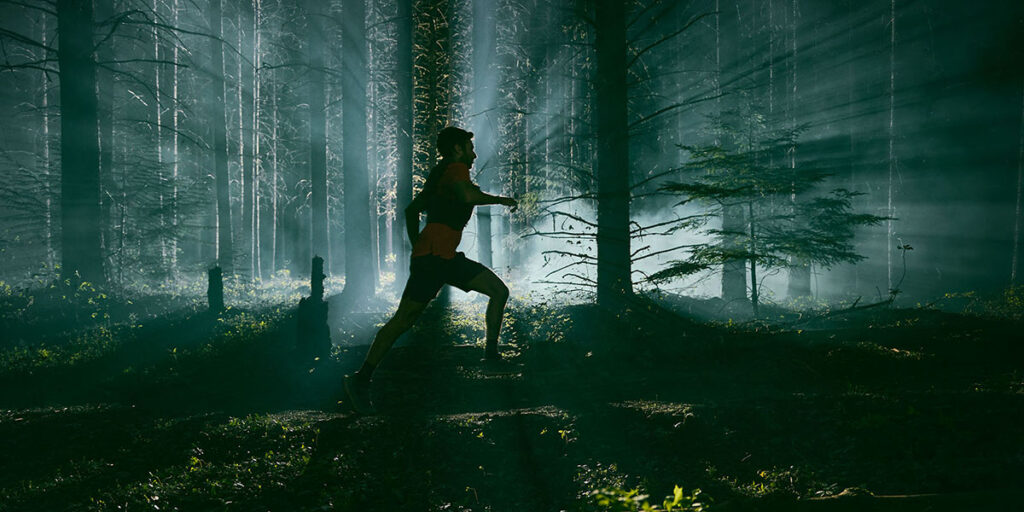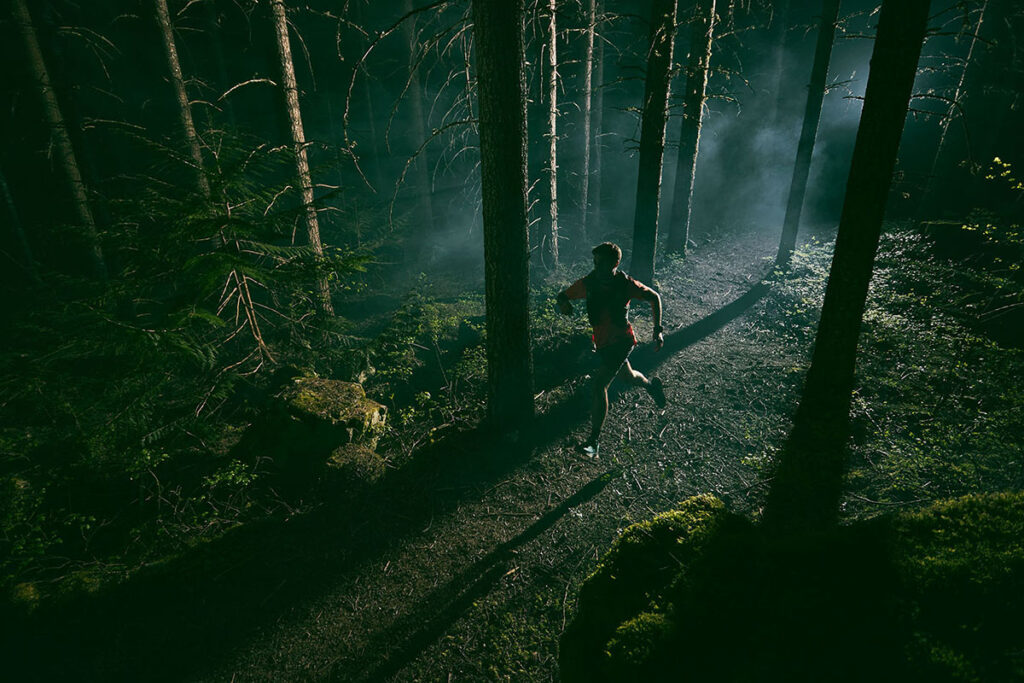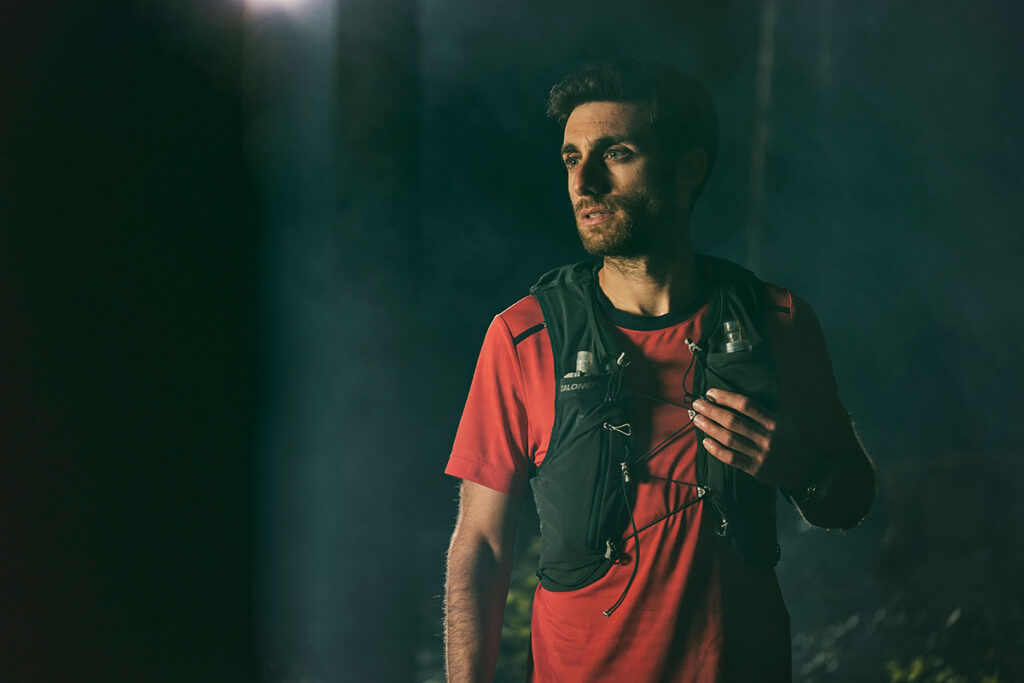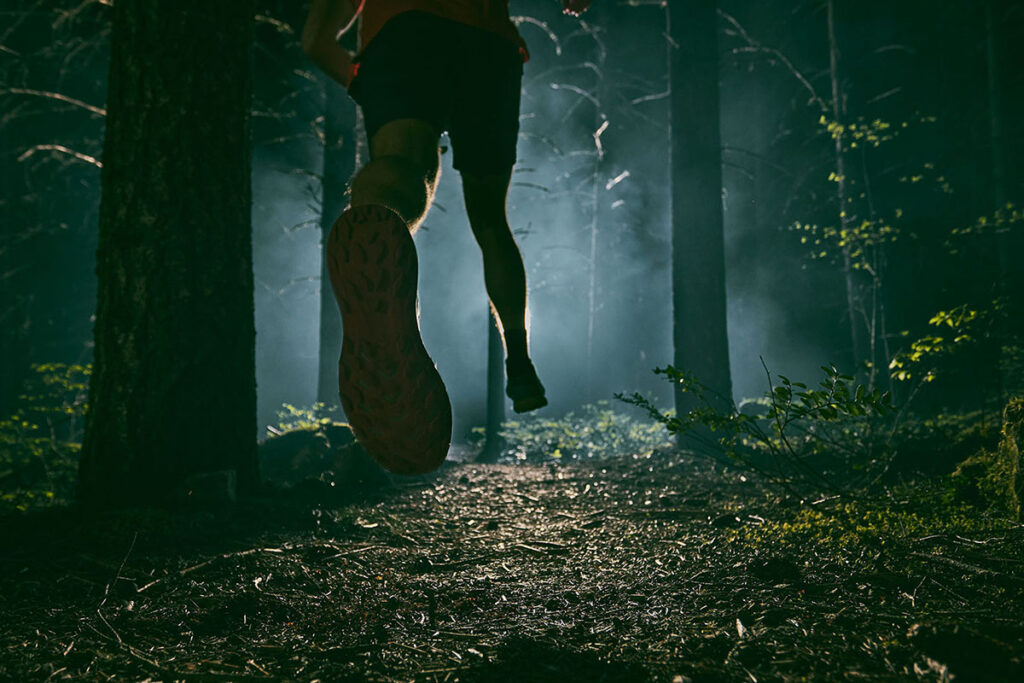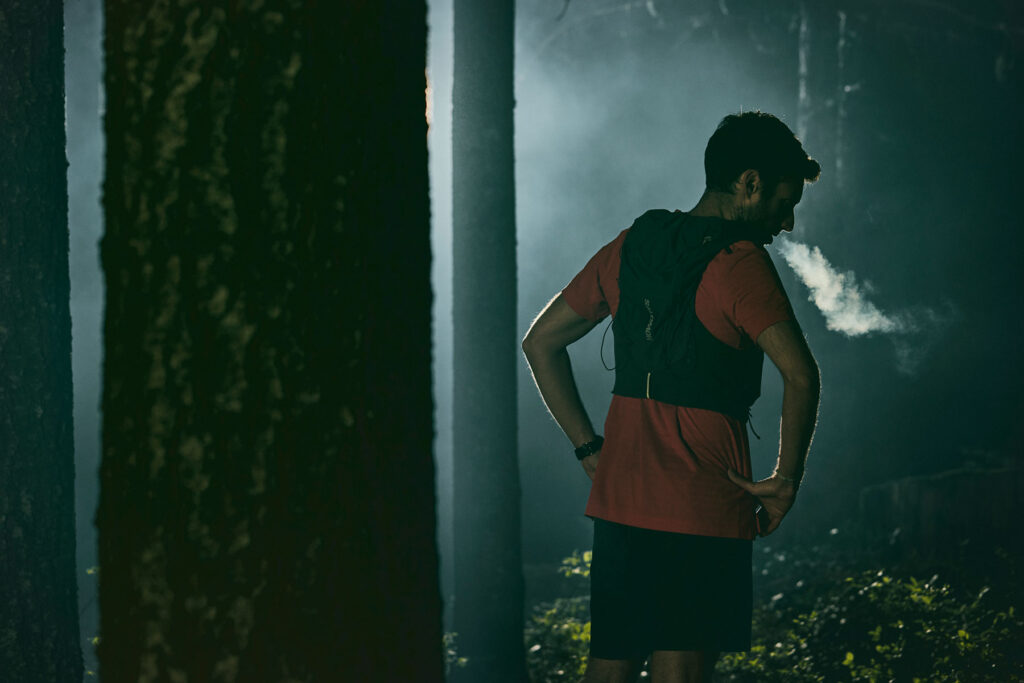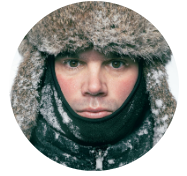Recently I have been exploring the concept of creating photographs and not just being present for moments. A lot of the work I do is at the mercy of Mother Nature, you can plan all you want, but if it’s stormy instead of sunny, or vice versa you need to adapt and get an entirely different shot then originally intended.
For this shoot, I wanted to challenge myself and see if I could execute an idea regardless of what the weather was like.
The idea was to shoot trail running and create a series of images at night through a foggy forest. We could have waited for the fog to naturally occur and be just right, but since I wanted to control all the elements of the shoot, including the fog, I figured out a solution. Using a smoke machine with a generator and a leaf blower, we were able to disperse the fog throughout the woods. However, this still proved to be complicated, and my assistant Shane Roy operated this machine and moved throughout the forest all evening to make sure the fog dispersed properly.
The fog was the most unexpected part of the shoot as it was something I had never done and was the real question mark of how it would react, but when it came to the lighting, I was confident. I have lit scenes in fog before so I knew how the light was going to react, and had a plan of what I wanted the images to look like in the end.
“The fog was the most unexpected part of the shoot as it was something I had never done and was the real question mark of how it would react, but when it came to the lighting, I was confident.”
For the main shot, I wanted the beams of light directed towards the camera creating shadows from the trees. To do this I set my Elinchrom ELB1200 back in the forest on a 12-foot lightstand and put an Elinchrom High Performance Reflector on it. This backlight illuminated the fog and created patches of light throughout the forest floor. Being that ELB1200 has so much available power there were no limitations on how far away I could set it, and still have enough light fill the forest.
The second light was my Elinchrom THREE with the Rotalux Deep Octa (100cm). I positioned this light high above the camera and feathered it upwards so it would not create spill on the ground. In addition, I added a Rotagrid to further control the direction of light without affecting the light properties of the Octa. The power setting was low to fill the shadows and add a bit of light to the runner without overpowering the backlight.
Almost immediately, we realized neither of these lights were positioned well for actually seeing where to run. We set up an Elinchrom ONE with the bare bulb and turned on the modelling light. By setting this flash to a different group, it would not fire when shooting, but illuminated the trail.
Once the position of the lights was set we started to shoot. The talent for the shoot was Guy Fattal, a talented photographer, and a trail runner. As a photographer himself, we were able to communicate easily and focus on timing the exact moment.
Since we were shooting at night there was hardly any light, so I did not need to rely on High Speed Sync to overpower the ambient light. Using the fast flash duration available in Action Mode on the THREE I was able to freeze the action and still shoot everything below the sync speed of my camera. The option of having both HSS and Action Mode on the THREE is convenient and allows for being better prepared for any situation, without needing to bring additional gear.
“The option of having both HSS and Action Mode on the THREE is convenient and allows for being better prepared for any situation, without needing to bring additional gear.”
The ELB 1200 as the backlight had the Pro Head, which allows for a faster flash duration then the HS head, but since this was my backlight, I was not relying on it to freeze the action.
With the ease of communication with Guy, we were able to quickly get the running to look the way I wanted it to. Not being sure how the fog was going to react, I shot on a tripod so I would have the flexibility of capturing plates of various parts of the forest with fog and composite them in post. In the end, we were able to get the fog fully throughout the forest and capture everything as a single image.
I was shooting tethered to the computer so we could preview the images as I shot, and make sure the lighting and motion was exactly what I wanted. Mitch kept an eye on this while I was shooting, as the fog would move fast. When it was in the right position we would shoot a few running passes before spending the time reviewing the images.
Once we captured that first image, we moved onto the other scenes. The layout of the lights stayed the same throughout, the ELB 1200 as a backlight; the THREE was fill light and the ONE as a light for Guy to see. The one change was for the portrait I increased the power on the THREE, as I wanted less shadow on Guy’s face.
The post production on this shoot was relatively simple. A few small tweaks to get the final look and colour I wanted, but was able to get it pretty close right out of camera.
Everyone who worked on this shoot are all talented photographers in their own respect so it was fun to collaborate with them and get their input as we shot to get to the final images and I appreciate their help as I wouldn’t have been able to do it without them.
Athlete: Guy Fattal
Assistants: Shane Roy, Mitch Winton



